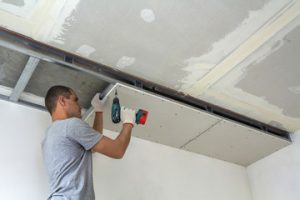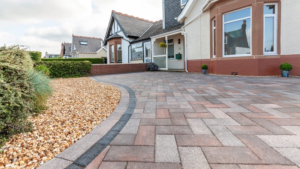The ceiling is an important part of the structure of your home, providing insulation and soundproofing. However, ceiling cracks and damage can detract from the look and feel of a room.
Choosing whether to DIY or call in professional help will depend on the extent of the repairs needed. Your Ceiling Repair technician can assess the situation and provide an estimate per square foot.

Cracks and Holes
Ceilings provide more than just a decorative surface; they also help to protect your home from weather elements and reduce sound levels. Sadly, they can be vulnerable to damage and require regular maintenance and prompt repair services.
Cracks in a ceiling are usually signs of structural damage and need to be addressed right away, especially if they’re accompanied by sagging. This indicates that the structure is being overloaded and can be caused by anything from excessive weight on the floor above (e.g., water tanks, HVAC units), attic conversions, or the removal of load-bearing walls. It can even be the result of foundation settling, which is why getting it fixed ASAP is so important.
Minor cracks, such as those that appear at the joints between sheets of plasterboard, are usually not a cause for concern and can be easily patched by an experienced DIYer. However, any discolored cracks accompanied by dampness or mold growth are serious and should be attended to immediately, as they can lead to significant structural problems in the future.
It’s worth pointing out that, even if you do have the expertise to handle these kinds of projects yourself, it is always a good idea to call in a professional. This ensures that the cracks are fully repaired and any underlying issues that could lead to further damage in the future are taken care of, too.
Water Damage
Water damage in ceilings is a significant issue that needs immediate repair to prevent more widespread structural damage and microbial growth. Water stains, musty odors, and dark spots are all indicators of water damage that should be addressed promptly to avoid costly repairs, health risks, and decreased property value.
Leaking roofs, burst pipes, and condensation can all lead to unsightly water stains on the ceiling that may spread over time. Prolonged water exposure can also weaken the structure of the ceiling, leading to sagging or even collapse. Mold and mildew growth can further detract from the overall appearance of the room and pose serious health concerns, especially for those with respiratory issues.
To identify water damage in your ceiling, gently press on the surface in different areas to see if it feels soft or damp. Leaks in the roof or plumbing should be addressed immediately, and if safe to do so, shut off the water supply to the area. Place containers or buckets under leaks to catch the dripping water. If the ceiling is sagging or bulging, a professional may need to inspect and possibly remove the damaged sections of the ceiling.
Once the source of the water is identified and repaired, the affected areas must be thoroughly dried to prevent future problems. This can be done with fans, dehumidifiers, or ventilation to speed up the process.
Mold and Mildew
Mold and mildew are more than just unsightly; they can also damage surfaces, worsen indoor air quality, and trigger allergies and respiratory problems. The easiest way to identify a mold problem is by looking for visible signs of growth, but sometimes it can be difficult to spot. A musty or earthy smell may indicate a problem, but it’s important to check behind and beneath surfaces as well.
Both mold and mildew thrive in warm, moist environments, where they can latch onto a wide variety of organic materials like plants, food, fabric, wood, or wallpaper. They’re particularly fond of porous surfaces that allow them to penetrate deep into materials.
Visible mold and mildew spores are fuzzy or slimy, while downy or powdery mildew looks yellowish or white at first before turning black or brown. Both are able to release spores into the air, making them easy to spread throughout your home.
To prevent these fungi, wipe down shower walls and windowsills after each use, fix leaky roofs or pipes promptly, and keep indoor humidity below 60 percent with the help of a dehumidifier in damp areas. In addition, cleaning regularly and improving insulation will reduce condensation that can lead to mold growth in ceiling corners or attics. A few drops of bleach can help kill mold spores and other microorganisms on contact, but it’s a good idea to wear a mask when handling contaminated areas.
Hidden Damage
Whether it’s due to heavy rains or broken plumbing, a leaking ceiling often results in water stains and mold growth. If these signs go unnoticed for too long, they can lead to severe structural damage and costly repairs.
Water stains, discoloration, and bubbling paint are all clear indications that the ceiling needs to be repaired. A professional technician will be able to inspect the area to determine the underlying cause of the leaks. They can then provide the appropriate fix, which may include repairing roof leaks or removing and replacing damaged drywall, framing, insulation, and shingles.
In addition, the experts at a repair company can use a skim coat to cover any sagging areas of the ceiling. They can also feather the edges to avoid noticeable lines or ridges. Once the repair is complete, they will repaint to restore the appearance of the ceiling. They will also use a stain-blocking primer to ensure the new coating doesn’t allow for any water absorption.
Keeping an eye out for the above problems and following a regular maintenance routine is key to preventing ceiling damage. It is also helpful to have adequate ventilation to reduce the risk of moisture build-up in your home. This will also help lower your energy bills and prevent drafts from making it difficult to heat or cool your house efficiently.
